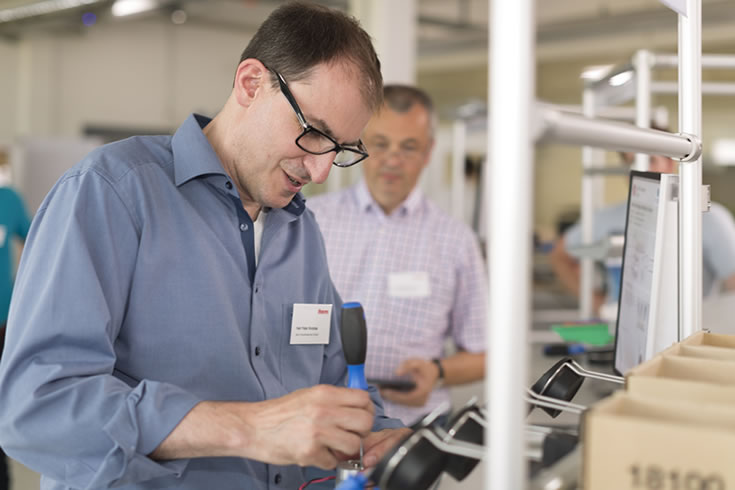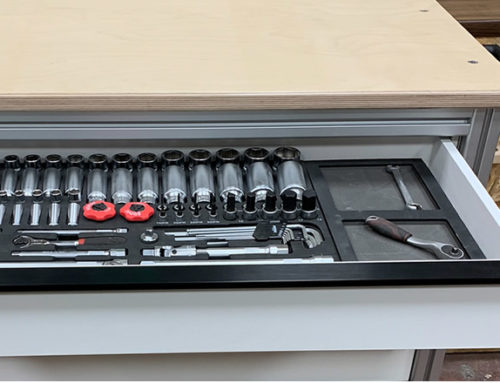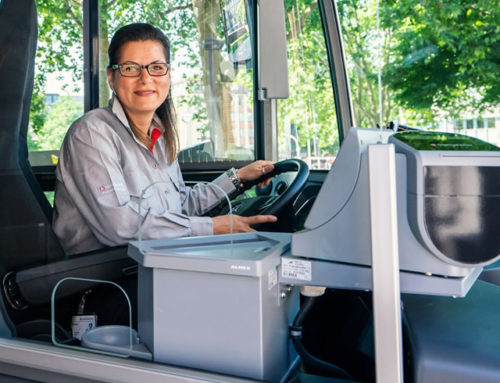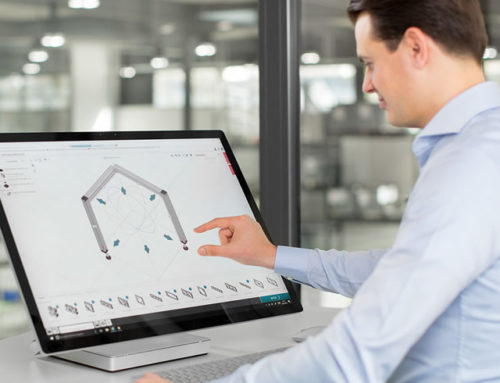The term “barrier-free” is used a lot these days, and in all sorts of contexts. But what does it mean for manufacturing companies?
Sometimes it refers to texts or websites, sometimes to buildings or participation in working life. In those kinds of circumstances, it’s pretty clear that the barriers in question can be both physical and “non-material” obstacles. The German Federal Government Commissioner for Matters relating to Persons with Disabilities summarizes freedom from barriers in the following way: “‘Freedom from barriers’ means full access and unlimited opportunities of use in all aspects of life.” Naturally, that includes barrier-free working in industry. But how do you break down the pretty considerable barriers in this particular aspect of life? And how exactly do companies benefit from using modular barrier-free work bench systems?
How employers benefit from barrier-free work benches
Companies can’t ignore the demographic changes affecting society and the persistent lack of skilled workers. They need to take action. By using barrier-free work benches, they can show their vision and take proactive measures instead of just reacting. To start off with, this approach may help net highly skilled and motivated employees who would otherwise often – and through no fault of their own – fall through the gaps in the labour market. According to estimates, by 2021, approximately 3.4 million people with a serious disability will be of working age. Many of those people will be highly skilled. Older employees are also invaluable, not just because their high skill level means they are excellent workers, but because they can also pass on crucial expertise to career starters.
What’s more, it pays to take into account basic ergonomic principles for all workers, not just disabled and older employees. Ergonomically designed work benches also benefit younger members of staff, who learn to be more mindful. This in turn has a positive impact on their productivity. In an interview with us, Professor Martin Schmauder perfectly summed up the essence of ergonomics and simultaneous freedom from barriers, describing it as a symbiosis of “humanity and cost-efficiency”. Viewed from that perspective, it is worthwhile considering how barrier-free work benches also impact on a company’s image. Indeed, what better calling card could a company hope for than a highly skilled and grateful workforce that commits to the business for the long term and stands for its social conscience.
Practical tips for barrier-free working
So how should companies go about acquiring barrier-free work benches? Once again, Professor Schmauder has some sage advice. And considering that barrier-free working is based on an ergonomic methodology, his summary is spot on: “Work bench systems based on a building kit system can be used in a whole variety of ways several times over. If a product range changes – which is often the case today – these systems can be adapted and there is no need to buy anything new. When you take into account their service life, [ergonomic] work bench systems aren’t really more expensive.” Once you include the various aspects mentioned above, it all adds up – barrier-free work bench design is well worthwhile.
However, modifying an existing workplace to satisfy barrier-free principles is no easy task and involves a not-inconsiderable amount of work and expense. That is precisely why it is best to “go barrier-free” from the outset when designing new work benches. This approach paves the way for the future and taps into plenty of potential for experimentation. The “two-sense principle” is a good example for how far the concept of barrier-free working practices can go.
Indeed, freedom from barriers is not just about obvious things like sitting, reaching distances and legroom – it’s also about sensory perception. It may sound obvious, but it is an aspect that is often overlooked. So what exactly is the “two-sense principle”? Well, it’s pretty simple – information on work safety, etc. should always be communicated in such a way that workers who are deprived of one sense can use another to access that information. For example, if an audible signal is being used as a warning, it should be backed up by a visual warning mechanism. All in all, it can be argued that decision-makers who opt for barrier-free work bench systems are also breaking down barriers that could otherwise stand in the way of their company’s future success.
Are you interested in ergonomics and freedom from barriers?
Then we have something that might just help! Simply subscribe to the item blog by completing the box at the top right!









